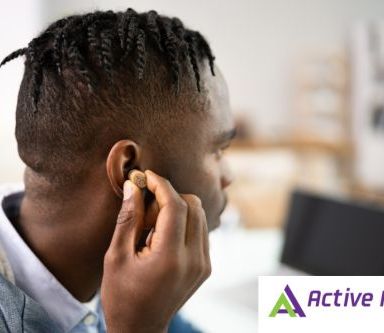
After visiting with an audiologist, you may discover that you are in need of some hearing aids. When just getting started, you can quickly become overwhelmed with all the hearing aid providers and styles of hearing aids that are available to you. Ultimately, your best success will come from finding a provider who is both experienced and who listens to your needs. Your provider can then help guide you on choosing which hearing aid is right for you by listening to your lifestyle needs, personal aesthetic preferences, and factoring in your degree of hearing loss.
Check out our beginners guide to hearing aids, so you can get a basic understanding of what is going to work best for you.
In-the-ear (ITE) hearing aids
ITE hearing aids go inside your ear canal, with some styles going deep within the inner ear and some that are closer to the outer ear. These are typically made after a custom impression of your ear is made and custom-tailored to you. However, since all the components have to fit in your ear, this leaves less room for venting the ear and hearing aid providers warn that some users report they feel plugged up with these styles:
-
Invisible in the canal/ completely in the canal: These two styles are very similar and fit deeper inside the ear canal rendering them nearly invisible. These hearing aids are a great option for those with mild to moderate hearing impairments and can produce a great quality sound thanks to their positioning. Due to their small size, however, these particular types are not usually able to be Bluetooth enabled or connect to your smartphone. Their small size also requires more dexterity to be able to manipulate them.
-
In the canal: These types of hearing aids sit in the ear bowl and fill the lower half. They are slightly bigger than the options that go completely in the canal, but in turn, have a longer battery life and more optional features. These features can be volume control, directional microphones, some are rechargeable, and many are Bluetooth enabled!
-
In the ear: These are the largest option of all ITE hearing aids, coming in half shell and full shell options that take up the bowl of your ear. These are large enough to have manual controls and can accommodate a full range of hearing loss. This option also often has the ability to connect with your smartphone device.
Behind-the-ear (BTE) hearing aids
These hearing aids sit behind or on top of the outer ear with a tube or wire that runs down to the ear canal. Since most of the components are in the portion that sits behind the ear, the fittings tend to be more open and often do not block the entire ear canal opening.
-
Receiver in canal: these are open-fit hearing aids that have a speaker built in a dome that is placed inside the ear canal and not in the main body of the hearing aid. The microphone and processor fit behind the ear, the speaker sits inside the ear canal, and the two pieces are connected by a thin wire. One of the great advantages of this style is that it is very discreet on the ear. It is also easy to repair as the receivers/speakers can be replaced in the office. While the receiver/speaker in the ear canal is invisible, the rest of the hearing aid behind the ear is visible with those who have short hair. This visibility can be minimized by hearing aid providers who can order them in different colors to better match skin or hair colors.
-
Behind the ear with earmolds: This particular style is usually most popular for children, but can be used by anyone with mild to profound hearing loss. The reason this style is so popular with children is because the BTE is compatible with the microphone systems used in schools by teachers and the earmolds can be easily switched out as the child grows.
Visit us
When searching for hearing aid providers near you, visit Active Hearing Health. Dr. Nikki is one of the best audiologists in Omaha and can help you to find the best hearing aid solution for you! Don’t be overwhelmed with all the choices, just contact us!






Comments